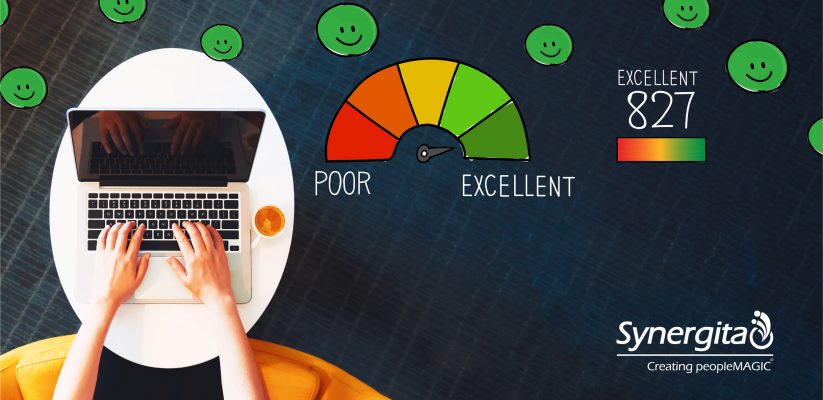Improve Your Workplace Culture with Synergita Culture Score
Workplace culture is a complex, ever-changing thing. Various factors influence how an enterprise operates, including its history and values, how the employees are treated, and how the outside world perceives it. It can often be hard to know the true reality of workplace culture and how to address or overcome the challenges and issues it presents.
Why is Workplace Culture Important?
In today’s changed workplace modalities, it’s more important than ever for leaders to understand the true reality of workplace culture. Workplace culture is a set of shared values, beliefs, and norms that drive how people behave within your workplace. The importance of workplace culture cannot be overstated. It is the foundation on which employees can build trust and develop relationships with their colleagues. It is also the basis for creating productive teams who perform well together.
These values are often expressed in your enterprise’s vision, mission statement, and core values. Workplace culture and environment can have a huge impact on your enterprise’s success and its ability to attract talent. Healthy workplace culture can help employees feel valued and committed to their work. It can also make them more productive in their roles because they’ll feel like they’re part of something bigger than their role and responsibilities. However, while most leaders recognize that they need to take workplace culture seriously, they may not fully understand its meaning or how best to create it within their enterprises.

Workplace Culture Challenges
Your enterprise may have a strong cultural focus on teamwork and collaboration, but some employees may feel left out because they’re introverts and don’t want to participate in social activities. Or perhaps there’s a lack of understanding about what constitutes teamwork at your enterprise. Some employees might think that going out for drinks after work means they’re supposed to get along with their coworkers all day long. Company culture affects employee engagement in subtle yet tangible ways. The reality of workplace culture can often be hard to measure due to the various factors that surround it.
It’s important to consider these various elements when looking at workplace culture. For example, some enterprises may be successful because they have a strong culture of innovation and creativity. In contrast, others could be successful because they have a strong culture of control and discipline. While both types of cultures have their merits, they also come with different challenges: A highly creative enterprise may struggle with keeping its employees focused on projects or goals; a highly disciplined enterprise may struggle with allowing for opportunities for personal growth or learning new skills.
If your enterprise does not have a healthy workplace culture, there will be repercussions that ultimately affect your enterprise’s bottom line. A few common warning signs of unhealthy workplace culture are as follows.
- Employees don’t trust management decisions or motives.
- Employees are afraid to speak up when they disagree with decisions made by leadership team members or HR representatives.
- There’s a lack of transparency between management teams and employees and no open discussion about how decisions were made.
The company has recently undergone downsizing or restructuring, which may have contributed to an atmosphere of fear and apprehension.
How can Synergita Culture Score help?
The good news is that you can use tools to assess your enterprise’s workplace culture and figure out how it could be improved. The Synergita Culture Score is one such tool. It allows you to measure your culture based on key areas like employee engagement in the workplace with an easy five-star rating system. You’ll also get access to helpful tips for improving each aspect of your enterprise’s culture.
Workplace culture is constantly evolving based on what people value most and what matters most to them as an organization. So, it is vital to track the changes to adapt accordingly. You can use Synergita’s Culture Score tool to understand where your enterprise stands today and where it needs to go for everyone involved to feel like they’re growing together as one unified team.
The Synergita Culture Score is based on a survey that asks employees about their perceptions of your enterprise’s values and goals and how they feel those values are being put into practice by management. The survey also asks employees about their general happiness with the company, their engagement with it, etc.
You can use this information by benchmarking against other enterprises in the industry. It allows you to see how your employees compare across enterprises with similar employee profiles such as geographic location, education level, etc. It lets you figure out where you need to focus your efforts for improvement. For example, suppose a majority percentage of people surveyed at your enterprise say they don’t feel like management cares about them or has their best interests at heart. In that case, you can conclude that something is going wrong with your management team’s communication style and/or attitude towards its employees’ well-being.
The data provided by Synergita can help team leaders identify specific areas where there are opportunities for improvement and identify key strengths and weaknesses within your enterprise so that you can focus on those areas moving forward.
To Wrap Up
Workplace culture is a concept that has been around for decades, but it wasn’t until the last several years that it became a buzzword in business and organizational studies. Understanding the meaning of culture score is one thing, knowing how to track it and enhance the work culture is another. Using a tool like Synergita’s Culture Score will help measure how employees perceive and demonstrate the core values of the enterprise. More importantly, it will push your enterprise to become one of the best places to work.

